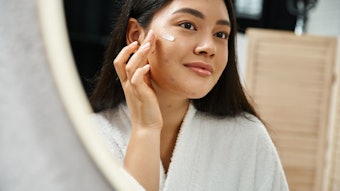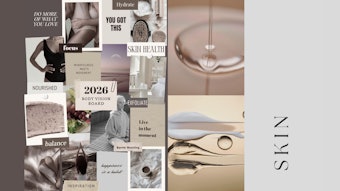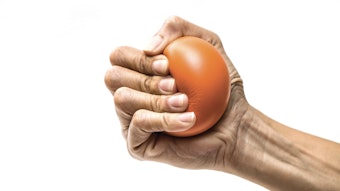As hoped for, 2010 has shown signs of recovery in the global market for professional skin care products. With the economy on track towards a rebound after the recession, manufacturers and distributors of professional skin care are exerting a tremendous amount of energy to lure customers back for expensive skin treatments and product purchases. These efforts are visible through heightened levels of product activity featuring advanced research and development formulas, as well as more extensive promotional support. Special offers for consumers ranging from extra value promotions, seasonal treatments and creative pricing, have become the new norm in the industry.
According to Professional Skin Care 2010 Global Series: Market Analysis and Opportunities, a newly released series of regional reports from Kline and Company, consumers in both the United States and Europe still have tight purse strings; however, they are willing to stretch and spend extra on products that can bring about visible improvement. As a result, more consumers are now coming back to professional skin care products and have increased the frequency of their visits to outlets including spas, beauty institutes and doctor’s offices.
Increasing client footfall
In order to draw customers through their doors, spas, beauty institutes and other dispensers of professional skin care products, have engaged in extensive promotional activity. One approach to increasing consumer traffic and encouraging repeat visits has been to offer savings on treatments through membership cards, discounts and value packages. Some outlets have also introduced express packages at lower prices for a variety of services. However, the importance of each service type varies by channel. Massage is the leading service performed in spas, while facials are the No. 1 service in beauty institutes. The high proportion of facial treatments is due to the fact that, as consumers save, they focus their available spending on what they regard as essential and facial care is at the top of their list.
The spas channel is one of the most progressive channels in the European professional skin care market, and is characterized by the rapid adoption of new ideas in response to consumer needs. Although spas face increasing competition from beauty institutes, spa operators are constantly seeking new ways to provide the most unique services at attractive prices. Spa owners also tend to opt for professional skin care brands that offer the best package to their partners in terms of benefits; these include free samples, marketing material and complimentary training.
To stand out among the competition, some spas have come up with creative seasonal offers that utilize suitable products that tackle ailments particularly associated with specific times of the year. Products that help maintain skin moisturized in cold winter months or keep skin radiant in the summer, are often enhanced with fragrances that underline the atmosphere of the season. Recently, Sothys has introduced two limited-edition in-spa treatments with the use of seasonal scented products: a massage cream with rhubarb and raspberry, as well as a vanilla and caramel line with a massage cream, vanilla face mask, and caramel scented body emulsion.
Professional skin care outlets are also increasingly expanding their portfolios to gain a competitive advantage. For example, beauty institutes are broadening their offerings by adding services typically offered by other channels, including body treatments, massages and minimally invasive esthetic procedures, that are performed by medical professionals affiliated with the institute.
Less invasive
In the medical care providers channel, the focus is shifting towards less invasive procedures. For example, the demand for injectibles such as Botox, Dysport and Restylane has experienced very strong growth. As a result, doctors are adding more less invasive procedures to their offerings and supporting them with strong promotional activity. As more customers trade down and replace surgical cosmetic procedures with nonsurgical ones, many are opting for professional skin care products to avoid going under the knife.
In some regions, regulations limit the dispensing of professional skin care products by medical professionals. For example, in most European markets, dispensing skin care products to patients is complicated or entirely prohibited. Conversely, in the United States, where distribution is unencumbered, various types of physicians including gynecologists and dentists turn to professional skin care to increase their revenue. As a result, the channel is expected to experience the highest five-year compound annual growth rate (CAGR) in the region of 9.6% through 2015.
A targeted treatment
Today’s professional skin care market is all about providing products that are well-suited to meet the needs of specific skin care concerns. In order to respond to a wide variety of conditions and changing demands, manufacturers are expanding the scope of their assortments to provide more targeted products. In the anti-ageing category, for example, this has meant an increased segmentation, with more products specialized for different age groups, skin types and color, skin problems, gender, and lifestyle. For example, new products targeting young consumers have been introduced, as awareness of the benefits of using preventative facial care products is growing.
The motivation behind expanding the anti-aging category is logical, as anti-aging is the number one concern across the professional skin care markets of Europe, the United States, and Japan. Almost one-half of all sales in these markets are for anti-aging products; a trend that is likely to prevail, as customers feel the need to look young navigating through the post-recession job market.
Most marketers typically segment facial products into four main categories: anti-aging, hyperpigmentation, rosacea, and acne. In order to better distinguish the image of their brand, some manufacturers’ place greater emphasis on treatment of a specific skin care concern. For example, French-based brand Anne Sémonin focuses more on research and development of anti-aging products, while the focus of another French brand Payot has been in developing treatments for intolerant and sensitive skin. Additionally, due to strong competition from mass-marketers of skin care products, as well as an increased level of consumer knowledge, manufacturers of professional skin care products are forced to compete on grounds of uniqueness. This has resulted in their introduction of new ingredients into products, including diamond, caviar, or pearl extracts, in order to create their own technology and trademark.
Looking ahead
An influx of new customers will undoubtedly continue to raise the hopes of a long-lasting recovery to the global market, which registered substantial declines in 2009. The markets in both Europe and the United States have seen positive gains in 2010. Europe has recovered posting a 3.0% increase following a 3.3% decline in 2009, and sales in the United States have increased by 2.7%. Japan’s growth remained flat at 0.1%. The market in Japan has suffered, as consumers have remained reluctant to buy relatively expensive professional skin care products. Strong competition from mainstream skin care brands including Shiseido, or Kosé impedes market growth for professional skin care. Additionally, in comparison to Europe and the United States, new product activity from leading marketers has also been relatively lukewarm in Japan.
While beauty institutes and salons will remain the largest purchase channel in most regional markets in Asia and Europe over the next five years, the medical care providers channel is likely to see the greatest growth across all three regions examined by Kline. This is due to increasing demand for more non-surgical skin care procedures as well as an increasing number of medical care professionals who will turn to selling skin care products at their offices. In Japan, the medical care providers channel is expected to see a 3.5% CAGR over the next five years. In Europe and the United States, growth in this channel will be even more promising, reaching CAGRs of approximately 7.0% and 10%, respectively.
Growth will depend on a steady increase in customer traffic and on a growing number of brands entering and expanding their presence in the various retail channels. More than ever before it will be essential for manufacturers’ and outlets of professional skin care products to deliver on the promise of their products superior results. Whether marketers can regain the loyalty of consumers who have returned to professional skin care after the recession as well as the new customers will depend on their ability to provide solutions catering closely to the needs of the savvy and well informed consumers of today’s new economy.
By Karen Dowkow, Industry Manager, Consumer Products, Kline










